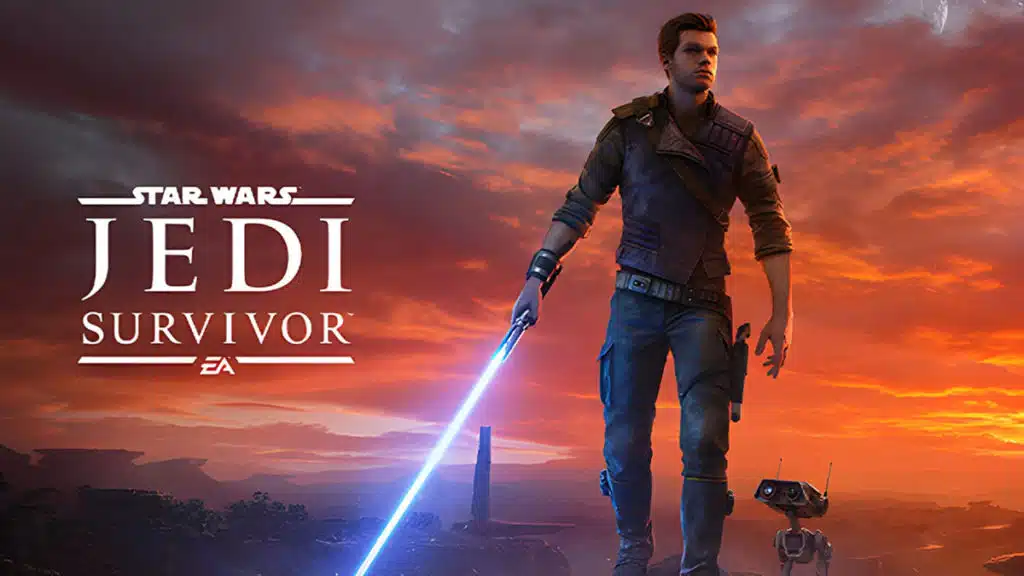
The first reviews for Star Wars Jedi: Survivor were published today, and while the new action-adventure sequel from Respawn Entertainment is getting plenty of praise from critics, one of whom went so far as to call it the best game in the Star Wars franchise since Knights of the Old Republic, PC gamers may want to prepare themselves for another frustrating launch. At least three reviews for Star Wars Jedi: Survivor have warned of serious issues in the PC port of the game, with one from a GameRant writer, who described it as being a “serious mess,” alluding to a wide range of problems that include stuttering, crashes, missing textures, clipping issues, memory leaks, and more. Another from RPG Site suggests that some players may not be able to maintain a steady 60 FPS frame rate even with a Ryzen 7 7700X in some portions of the game, while one more from GamersRD claims that the game suffers from graphical problems, such as forced chromatic aberration and what sounds like a weird type of motion blur. Star Wars Jedi: Survivor launches for PlayStation 5, Xbox Series X/S, and PC on April 28, 2023 for $69.99, but it will also be available to play via EA Play Pro, which costs $14.99/month.
From a Game Rant review:
On the technical side, Star Wars Jedi: Survivor is a serious mess, but it is worth mentioning that our final review build of the game didn’t have any of the launch day optimizations players may have at release. Throughout our time with the game, we experienced multiple hard crashes, missing textures, various clipping issues, and a nasty memory leak problem that even ate into our hard drive space. Additionally, despite including a non-descript “file optimization” process at the start of each play session, Jedi: Survivor was still rampant with stutters and poor performance across multiple systems, including instances where the game ran at single-digit frames per second.
Jedi: Survivor still suffers from many of the issues that have plagued Fallen Order for the past three years. These problems include significant audio delay in cutscenes, clunky input delay and input queuing, and a camera-highlight system that frequently has trouble deciphering what the player wants to target. For an ambitious first attempt with Fallen Order, some of these issues could have been swept under the rug and chalked up to growing pains, but for a sequel, it is disappointing that Jedi: Survivor still retains so many nagging problems.
From an RPG Site review:
The area in Koboh around Pyloon’s Saloon is incredibly CPU heavy; even at 4K max settings, which the game defaulted to on my PC setup, I would end up seeing my GPU usage drop as low as 70% during these CPU-bound scenarios.
I would on occasion drop below 60 FPS; and that’s with a Ryzen 7 7700x, a CPU that AMD – at least as of the time of this review – is currently offering a free key for this very game with new purchases. While we did not have access to the console versions to test, everything that I’ve heard about the state of them is that performance mode is most likely not worth using; the sacrifices to resolution appear far too great going by the numbers I’ve heard spinning around, and you won’t be hitting a locked 60 FPS anyway – I shudder to think about the state of the game on Xbox Series S.
From a GamersRD review (machine translation):
We are talking about night maps like “Coruscant” where there is a lot of lighting, ultra-saturated colors, screens, lights, and other sources that cause contrast with a gloomy ecosystem.
On this particular map, the level of chromatic aberration present at the edges between light surfaces and dark surfaces is painful to look at. On top of that it is not an option that the game currently offers us to deactivate.
Continued… The graphics in general are intended to be ambitious and offer a lot of attention to detail.
The detail is that the execution is not good at all.
The moment there’s a basic level of movement, there’s an extremely annoying level of pixelation that dulls the animations, and definitely ruins the experience for obvious reasons.
With this, we are not talking about loss of frames per second or distortions in processing or signal inputs.
To the eye, it would seem like a kind of intermittent resampling to which we do not have any type of access; or a serious programming error in the animations.
To this is added the old reliable that are the “crashes” to the desktop and interruptions to the general execution of local files with a somewhat inexplicable frequency.
